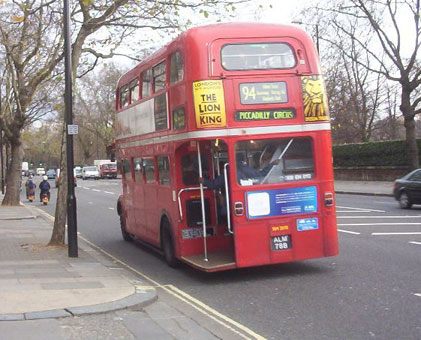"Within 25 years, our goal is to give 80 percent of Americans access to high-speed rail." With this ringing statement in his State of the Union address, President Obama injected new hope into the flagging spirits of high speed rail advocates. Predictably, spokesmen for industry associations, progressive advocacy groups and other stakeholder interests praised the President’s goal as a symbol of his renewed commitment to support investment in infrastructure. But hardly any one we spoke to at the TRB meeting took the President’s ambitious goal seriously.
"After listening to President Obama’s remarks on high-speed rail, I am left with more questions than answers," observed Rep. Bill Shuster, Chairman of the Subcommittee on Railroads of the House Transportation and Infrastructure Committee, who addressed the TRB Committee on Intercity Passenger Rail. "These promises mean little and the White House knows it," observed a railroad industry consultant attending the meeting, "it’s not within Obama’s power to commit future Administrations and Congresses to this pipe dream." "The President is out of touch with reality; where does he think the money will come from?" was a succinct reaction of a former senior U.S. DOT official.
Lack of a Financial Plan
There is good reason for these expressions of skepticism. Although some likened President Obama’s expansive vision to President Eisenhower’s historic call for a 42,000-mile Interstate Highway network, there is a vast difference between the two initiatives. The Interstate Highway proposal was backed by a reliable and steady revenue stream in the form of a federal gas tax. The high speed rail goal lacks a financial plan. It is not supported by a dedicated source of revenue that could maintain the program on a self-sustaining basis over a period of years. Nor can the Administration count on borrowed money or annual appropriations out of general revenue in the current political environment in which deficit reduction rather than new spending is the top congressional priority. Calling expenditures on high-speed rail "investment" does not obscure the reality that we would be spending money that we do not have. As if to underscore this point, the Congressional Budget Office announced on January 25 that this year’s federal budget deficit of $1.5 trillion will be the biggest one in history and the largest as a share of the economy since World War II. "Obama’s proposal is likely to land with a dead thud on Capitol Hill," opined National Journal’s transportation editor Fawn Johnson.
States' Ambivalence
A second reason for skepticism is the ambivalent attitude of the states toward high speed rail. As Federal Railroad Administrator Joseph Szabo, speaking at the TRB meeting, correctly pointed out, the high-speed rail initiative is a state-driven program. Hence, support of governors and state legislatures will be essential if the Obama vision is to succeed. But, as we have seen, several fiscally-strapped states (Wisconsin, Ohio, Iowa) have declined to participate in the Administration’s HSR program while Florida’s Governor Scott still has to be heard from.
Other governors and state legislatures may well follow their example should they conclude that high-speed rail projects will burden their constituents with massive annual operating subsidies and possibly open-ended risk of construction overruns. The protracted and still inconclusive track-sharing negotiations with the Class 1 railroads suggest that more than one state is having second thoughts about the wisdom of proceeding with these projects (at least on terms demanded by the Administration). About one-half of the dedicated HSR funds still remain unobligated according to the latest Federal Railroad Administration report.
Fred W. Frailey, a respected writer and commentator on the railroad industry and author of Twilight of the Great Trains thinks that enthusiasm for high-speed trains has peaked and is on the wane. Writing in the current (March) issue of TRAINS, Frailey says the collapse of support is not merely a partisan event. Election results suggest that the public was never really won over. Nor will the Association of American Railroads or its member railroads fight for HSR. "So anyway you cut it, the high-speed show is over," Frailey concludes.
A Fresh Congressional Posture
This does not mean that fast trains will have no role to play in America’s future. There is a need to diversify travel alternatives in crowded travel corridors to accommodate future population increases. But, as a congressional hearing in New York City on January 27 made clear, federal efforts should be refocused on places where passenger rail investment is economically justified and where there exists a potential of sufficient ridership to attract private capital. As Congressmen Mica and Shuster correctly concluded, this means concentrating on the densely populated and heavily traveled Northeast Corridor with its serious air traffic congestion and well-developed urban transit distribution networks in major metropolitan areas.
A majority of the witnesses testifying at the hearing seemed to agree with the two congressmen. They included such influential advocacy groups as Building America’s Future (Gov. Ed Rendell and Mayor Michael Bloomberg), America 2050 (Petra Todorovich) and U.S. High Speed Rail Association (Thomas Hart).
Thus, the need to involve the private sector and to focus on the Northeast Corridor as a matter of first priority could well emerge as the core elements of a new congressional posture on high-speed rail. Instead of lavishing money on projects in numerous states in an unrealistic and fruitless attempt to make high-speed rail accessible to 80 percent of Americans, Congress would use targeted financial incentives to attract private investment and encourage private sector involvement in a few corridors where high-speed rail service makes economic and transportation sense. The inducements could include long-term operating concession agreements, loan guarantees, tax credits, availability payments and other creative financing arrangements. Whether additional federal funds to bolster such a policy will be forthcoming in the deficit-conscious 112th Congress, remains to be seen.
Ken Orski is Editor and Publisher of Innovation NewsBriefs, a Washington-based transportation newsletter in its 22nd year of publication.














